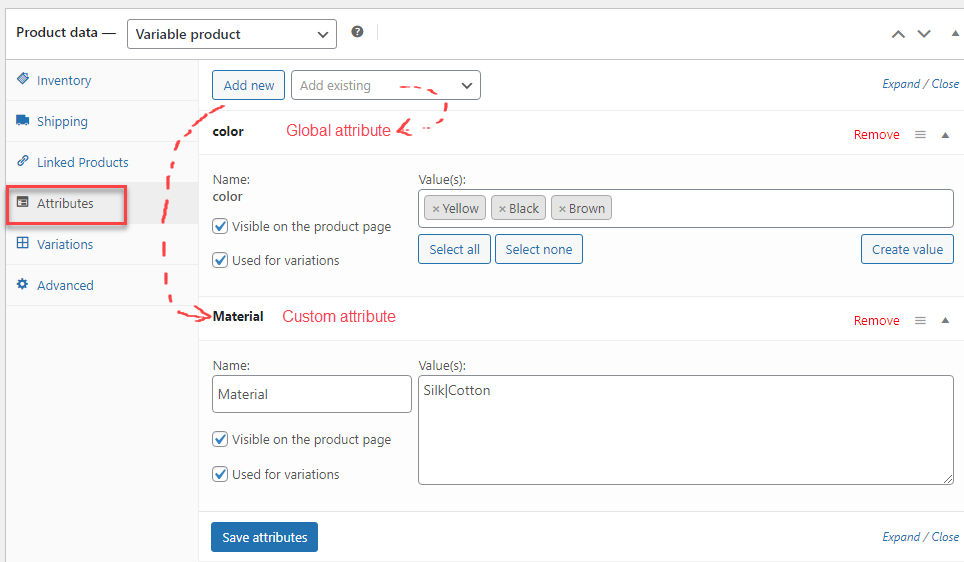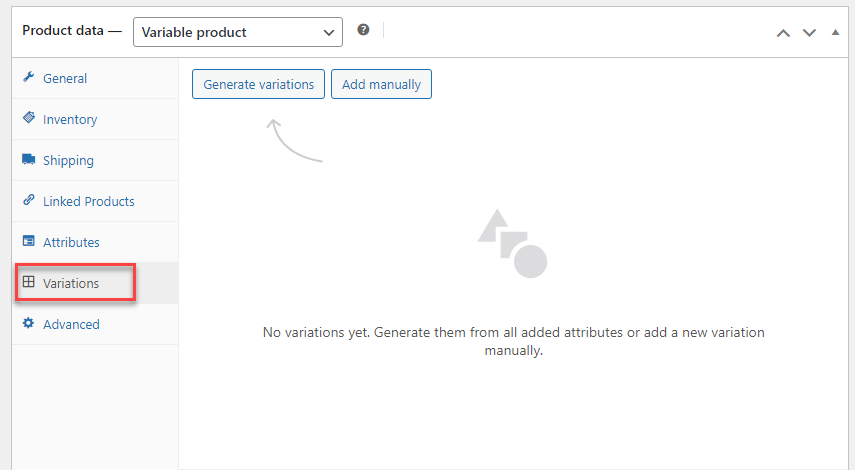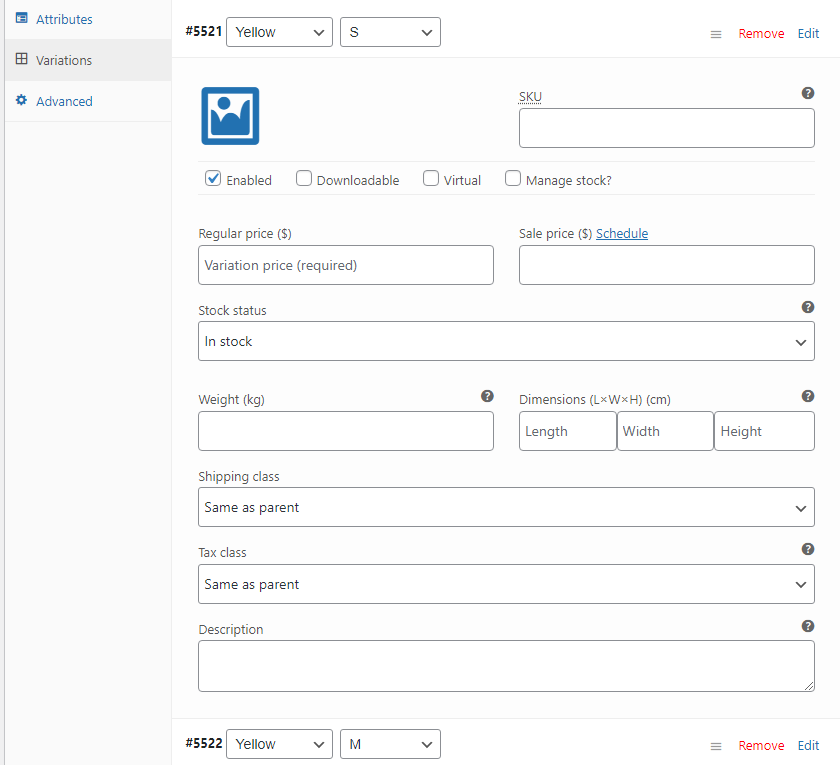Before exploring what WooCommerce Attributes and Variations are, you should be familiar with the WooCommerce variable products.
- What is a variable product?
- How to create a variable product?
- How to create attributes?
- How to create variations?
- Distinguish between attributes and variations
What is a variable product?
As WooCommerce states, Variable products in WooCommerce let you offer a set of variations on a product, with control over prices, stock, image, and more for each variation. You can use them for a product like a t-shirt, which you can offer in large, medium, and small sizes, all in different colors.
How to create a variable product?
To create a new variable product:
1. Go to “Products” in WP-Admin (the site’s admin area).
2. Click on “Add New Product” at the top of the page.
3. Enter the product name.
4. Select “Variable Product” from the “Product data” dropdown menu.

5. Navigate to the “Attributes” tab on the left-hand side under the “Product data” dropdown.
6. Add either a global/existing attribute or create a new one specific to the product (Custom attribute). You can see how to distinguish between a global and a custom attribute
How to create attributes?
- To add a global attribute:
- If you’ve already created global attributes, choose the desired one from the “add existing” dropdown menu at the top of the settings.
- Select the variations or values you wish to use from that attribute. You can add them all by clicking the “Select All” button below the values box. Alternatively, you can choose specific ones by clicking on the “Select Values” box and selecting them individually.
- To add a new Attribute:
- Click the “Add New” button at the top of the settings.
- Provide a name for your attribute (e.g., Material).
- Add the necessary values or variations. Separate each variation/value with a pipe symbol (|). For example: Cotton|Silk…
You can see how to create and distinguish between a global and a custom attribute
7. Then “Save attributes”.
8. Next, navigate to the Variations tab.
How to create variations?
9. Check whether
- “Generate variations” to automatically add all possible variations based on attribute values.
- Select “Add manually” to specify which variations will be available for the product.
10. Next, click on each variation to expand its product menu.
11. Enter the necessary product information such as price, stock status, weight, dimensions, shipping class, and description. Additionally, add Linked Products if required. Repeat this process for all variations.
12. Optionally, you can utilize the “Bulk Actions” dropdown at the top of the “Variations” menu to set product information for all variations simultaneously.
13. Finally, click “Save changes” at the bottom of the variations menu, and then click “Publish” in the top right corner of the screen to publish the product.
Distinguish between attributes and variations
As demonstrated above, we can understand between the 2 definitions: Attributes and variations
Product attributes in a WooCommerce store, as well as in most other eCommerce platforms, are characteristics that provide additional information about your product. For example, if you’re selling a dress, the product attributes might include its size and color. Similarly, if you’re offering courses, an attribute could be the prerequisite skills needed to enroll in the course.
These attributes serve to provide detailed information about the product. In the case of the dress, they specify the available sizes and colors, helping customers make informed decisions. Similarly, for the courses, listing the required skills ensures that potential students know whether the course is suitable for them.
Variations in WooCommerce represent the various options available to customers when purchasing a product. These options are determined by the product’s attributes.
A variation in WooCommerce is a combination of different attribute options, referred to as ‘terms’. For example, consider a dress:
- The dress has two attributes: Size and Color.
- Sizes include the terms Small, Medium, and Large.
- Colors include White and Black.
In summary, WooCommerce attributes provide detailed information about your products, while variations offer customers a selection of choices. It’s important to note that attributes are optional for many products but are essential for Variable products, as they serve as the foundation for creating necessary variations.



